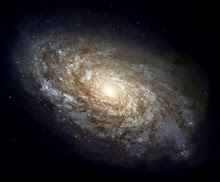Q: Thirty miles of dirt in a day?
A: It may come as a surprise to some, but not all rock layers were laid down during Noah’s Flood. In fact, the evidence indicates that more geologic layers may have been formed during Day Three of Creation Week than during the Flood.
The opening verses of Genesis 1 tell us that at the beginning, on the first day, God created the earth with water on its surface. We are not told what was under the surface water. Perhaps God had created the earth’s internal structure of core, mantle, and crust, which were located under the water. What we do know is that on the second day God placed some of the waters of the earth above “the firmament.” Then on the third day God commanded the earth’s surface waters to be gathered into seas and the dry land to appear.
This statement in Genesis 1:9 is simple yet geologically profound. Although the verse indicates that the water moved, it does not indicate exactly how the land came to be above sea level. One possibility is that God used catastrophic earth movements to almost instantaneously raise and lower blocks of the earth’s Day One crust to form dry land and sea basins. If that were so, as the crustal blocks were raised, the surface waters that had been covering them would have drained rapidly off the land. Rapidly moving water catastrophically erodes, so massive erosion must have occurred. Thus laden with sediments, these waters would have drained into the ocean basins, where the sediments would have been deposited rapidly. Because neither plant nor animal life had yet been created, the resultant sedimentary rocks would be devoid of animal or plant fossils.
When most people visit Grand Canyon in northern Arizona, their eyes are riveted on the spectacular walls, which display about 4,000 feet (1.2 km) of flat-lying sedimentary rock layers (limestones, sandstones, and shales). Filled with the buried remains of plants and animals, these layers must have been deposited during the Flood, which God sent to destroy every living substance on the face of the earth (Genesis 7:23).
Underneath these layers—near the bottom of the canyon—are many other layers that do not contain plant or animal fossils. Violent processes, including volcanoes and rapidly moving mud and sand, must have created these layers. Many tilted sedimentary and volcanic rock layers (about 13,000 feet [4 km] thick) sit on top of other folded and metamorphosed layers of both sedimentary and volcanic rocks (estimated to have been originally about 40,000 feet [12 km], thick). After these metamorphic rocks formed, hot granites from deeper in the earth must have intruded into them.
Read the rest of Dr. Andrew Snelling’s expert analysis in Thirty Miles of Dirt in a Day, a special sneak peek into the upcoming October–December issue of Answers magazine that features the creation model and examines global warming.
News to Note Quick Look
Neanderthal intelligence: To our Neanderthal readers: on behalf of all Homo sapiens, pardon our past arrogance—not to mention our incorrect portrayals of you! Read more.
Evolution of Mickey Mouse: A lengthy article in the New York Times examines a microcosm of the controversy over evolution education in public school classrooms—and even mentions AiG’s student-aimed bestseller Evolution Exposed. Read more.
Also: beetles to beetles, finding Nemo, and a cattle compass. Read more.
This information was provided by Answers In Genesis, an excellent source of material relating to Creation and evolution. Please visit their website using the link in the upper left
Subscribe to:
Post Comments (Atom)


No comments:
Post a Comment